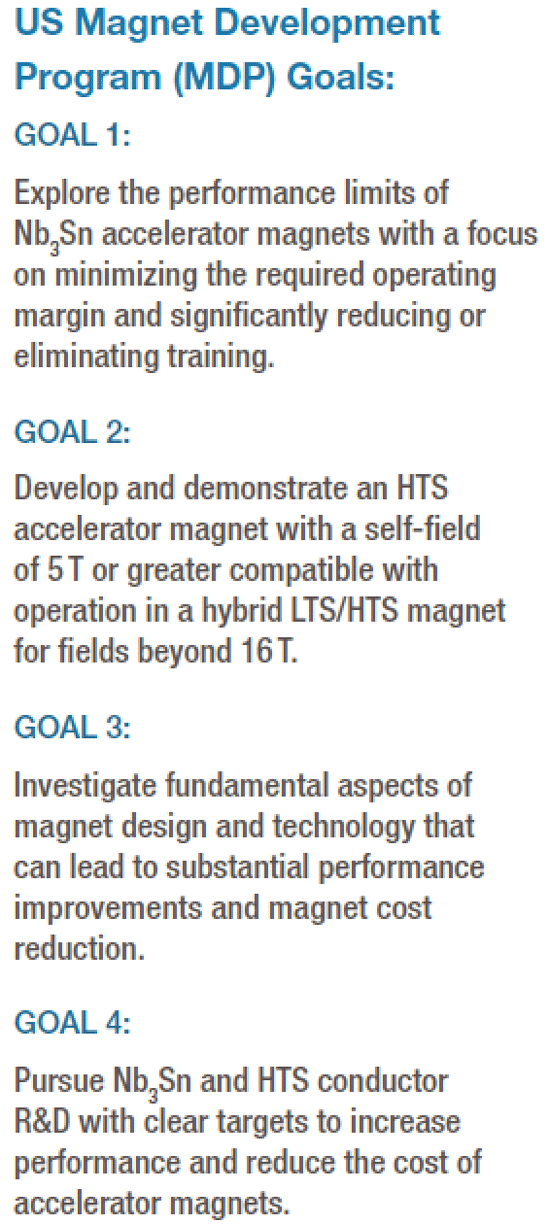Explore the performance limits of niobium-tin (Nb3Sn) accelerator magnets with a focus on minimizing the required operating margin and significantly reducing or eliminating training.
Magnets with a small bore or no bore have reached 16 T in the US and recently at CERN. Modeling indicates that this is close to the practical limit for currently available high performance Nb3Sn wire. The remaining challenge is to realize this potential in accelerator quality magnets, both in magnets with small aperture, typical of high energy colliders, and in magnets with larger aperture, to provide background field for HTS inserts. We aim to demonstrate the feasibility of a magnet with a bore field of 16 T (at 90% of the conductor limit) with a bore greater than or equal to 50 mm with two complementary approaches:
These goals will be achieved by focusing on high field dipole development along four elements.
The program is focused on transformational magnet technologies, leveraging the significant experience base developed in the magnet programs while incorporating a strong science-based element to address limitations to magnet performance. Success will rely upon a collaborative effort of U.S. national labs, industry and universities that takes maximum advantage of existing infrastruc- ture and expertise at the participating institutions by combining and coordinating intellectual and infrastructure resources. The work outlined here will advance high-energy physics while increasing our own capabilities in accelerator magnet technology. This will position the U.S. for a leadership position in the development of enabling technology for the next generation of very high energy proton-proton colliders and, in the nearer term, establish a technology base for a possible energy upgrade of the LHC. As an HEP funded Program, its primary focus is on magnets for accelerators, but the generic approach will develop magnet technologies that can be applied to a large variety of applications across the DOE Office of Science and beyond. |

|
